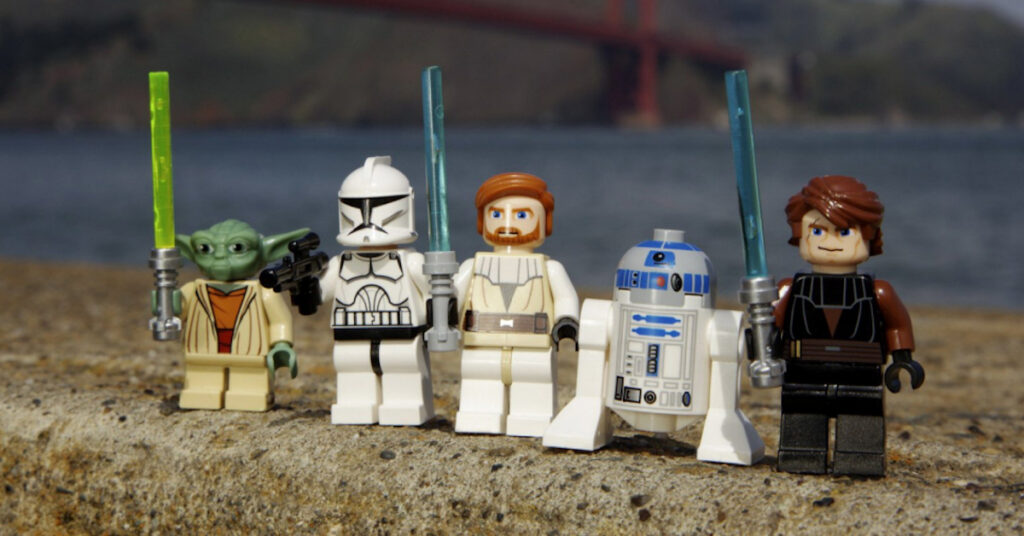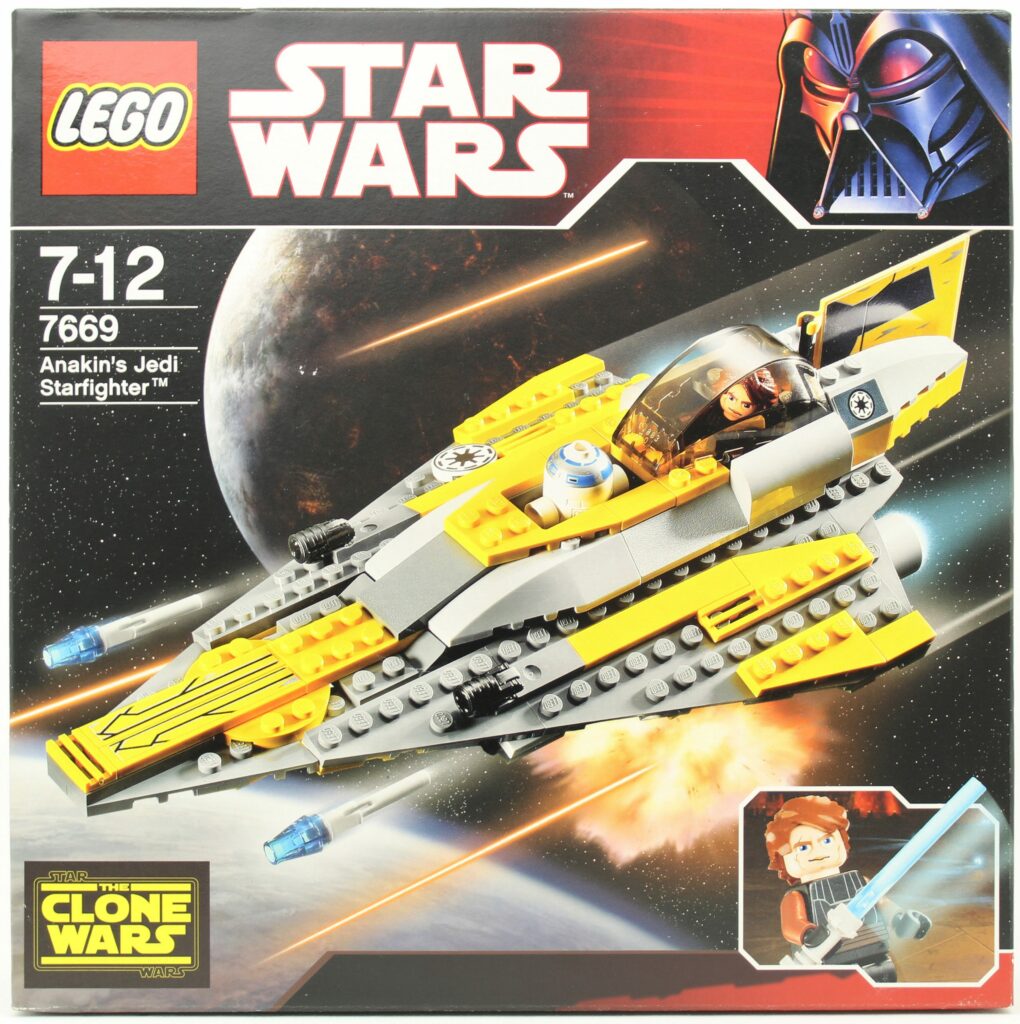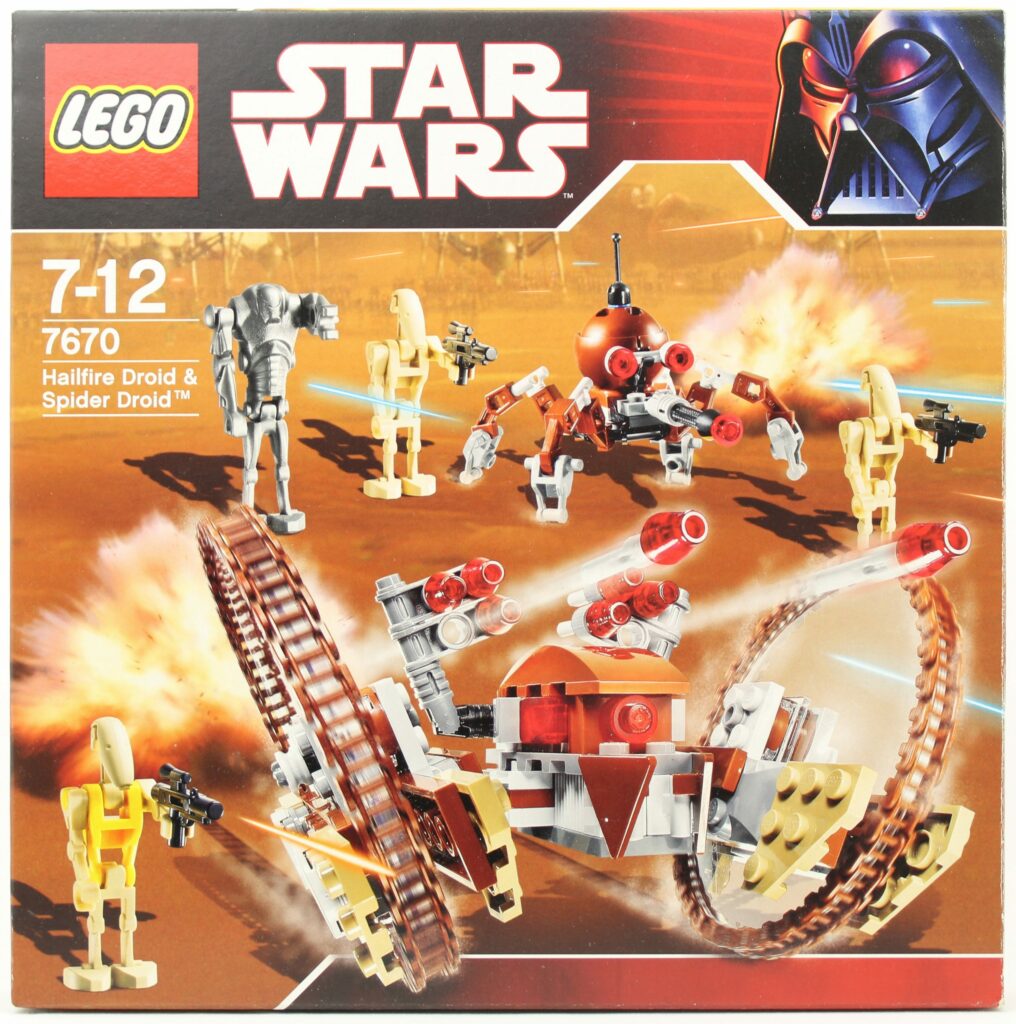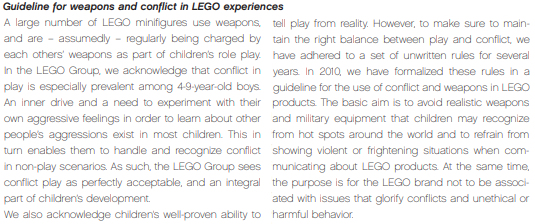
After almost ten years of producing sets based on the Star Wars movies, LEGO had to make a sea change to its content when, in 2008, Lucasfilm released The Clone Wars animated TV series. This continuation of the Star Wars story arc drew more on armed conflict than the general theme of the battle of right and wrong, salvation and redemption that the six Star Wars movies conveyed.
Debuting as a feature-length film in the United States in August 2008, and later going on general release, the hour and 38-minute long extended episode (which is currently available on Disney+) served as a pilot for the series that launched in early October of the same year, though the first true Clone Wars sets arrived in July 2008, and were timed with a big marketing push at San Diego Comic-Con.
This wasn’t the first time the Star Wars story had been told on the small screen – kids in the 1980s had Droids and Ewoks on Saturday mornings – though it was the first time that LEGO had to adapt their most popular theme to this new medium.
Initially conducted as a soft roll-out, the first two sets didn’t have the blue and white masthead packaging graphics that the Clone Wars collection adopted the following year when the line was fully launched.
One of the first Clone Wars sets to get released was 7669 Anakin’s Jedi Starfighter, a version of the Delta-7B Aethersprite-class light interceptor that Obi-Wan Kenobi piloted in Attack of the Clones. Released as part of the Winter Wave in December 2007/January 2008, it was accompanied by 7670 Hailfire Droid & Spider Droid.


While the latter set gave nothing about the forthcoming TV series away (in fact it was a whole 6 months later that fans discovered the set was linked to the upcoming TV series), Anakin’s new ship was an un-seen yellow Jedi Starfighter, the Anakin Skywalker minifigure had a whole new look and the box had a taunting graphic on its front.
Initially concentrating on the prime characters of The Clone Wars series, LEGO was able to produce a range of sets that encouraged play through re-enacting the adventures of the main protagonists – Anakin “Fly Guy” Skywalker and his Padawan, Ahsoka “Snips” Tano, a young female Togruta.
The tempestuous master/apprentice relationship, set to the background of a galactic conflict, was the main plot driver of the first season and was easy for LEGO to accommodate into their Clone Wars collection, though subsequent series became more driven by battle – forcing LEGO to reflect upon itself.
Concerns were raised when LEGO modified the design of hand-held guns in 2007, and mainstream media glommed onto the issue, with it becoming a hot topic of conversation in 2008.
Though adventure was firmly in their wheelhouse, battle was a concept that LEGO had made an effort to avoid since their earliest days. Well known for their strict policies in dealing with conflict in roleplaying and weapons in their products, LEGO was faced with a problem as the premise of each season became darker as the series progressed.
By formally acknowledging this for the first time, LEGO recognized that children, particularly boys between the ages of 4 to 9, had an inner drive to experiment with their own aggressive feelings to help them come to terms with conflict in non-play scenarios. As such, the LEGO Group admitted that their view of conflict in play was both acceptable and integral to a child’s development, and used the 2010 Progress Report to codify their guideline for weapons and conflict in LEGO experiences.

As well as developing a new way of characterizing minifigures’ faces to match the fresh animation style that Dave Filoni and his creative team were bringing to living room screens, LEGO also had to strike a balance between the core of the series’ storyline – warfare – and LEGO’s own directive to provide toys that didn’t predicate violent roleplaying scenarios.
In clarifying their stance – by stating that they would not produce toys with realistic weapons or military equipment, would refrain from showing violent or frightening situations, and not allow the LEGO brand to be associated with issues that glorify conflicts and unethical or harmful behavior – LEGO dodged a laser bolt from parenting groups.
Looking back it’s hard to remember the concerns raised about LEGO taking such a big step into the arena of war, but the fears were tangible at the time and LEGO was faced with the dilemma that producing a range based on The Clone Wars animated series might damage the company’s reputation.
After a decade of continued success, it’s safe to say that the community embraced this change, and with over 60 different sets – which we’ll be looking at in an upcoming series of articles – complementing the story arc, Clone Wars sets are not going anywhere soon.


Be the first to comment